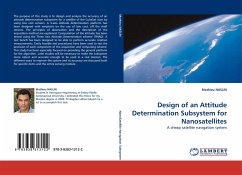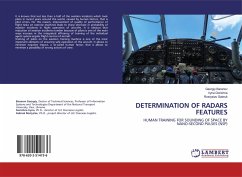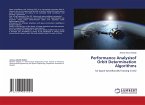The purpose of this study is to design and analyze the accuracy of an attitude determination subsystem for a satellite of the CubeSat class by using low cost sensors. A 3-axis attitude determination platform has been designed with emphasis on the use of low cost, off the shelf sensors. The principles of observation and the description of the acquisition method are explained. Computation of the attitude has been tested using the Three Axis Attitude Determination scheme (TRIAD). A test bench has been designed to be able to perform accurate rotation measurements. Easily feasible test procedures have been used to test the precision of each component of the acquisition and computing scheme. This study has been especially focused on providing the general platform for the algorithm. Later studies will be necessary to make the subsystem more robust and accurate enough to be used in a real mission. The different ways to improve the system and its accuracy are discussed both for specific items and the entire sensing module.
Bitte wählen Sie Ihr Anliegen aus.
Rechnungen
Retourenschein anfordern
Bestellstatus
Storno








